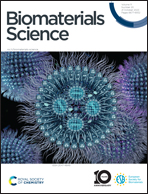Recent advances in nanomaterial-mediated bacterial molecular action and their applications in wound therapy
Abstract
Because of the multi-pathway antibacterial mechanisms of nanomaterials, they have received widespread attention in wound therapy. However, owing to the complexities of bacterial responses toward nanomaterials, antibacterial molecular mechanisms remain unclear, making it difficult to rationally design highly efficient antibacterial nanomaterials. Fortunately, molecular dynamics simulations and omics techniques have been used as effective methods to further investigate the action targets of nanomaterials. Therefore, the review comprehensively analyzes the antibacterial mechanisms of nanomaterials from the morphology-dependent antibacterial activity and physicochemical/optical properties-dependent antibacterial activity, which provided guidance for constructing excellently efficient and broad-spectrum antibacterial nanomaterials for wound therapy. More importantly, the main molecular action targets of nanomaterials from the membranes, DNA, energy metabolism pathways, oxidative stress defense systems, ribosomes, and biofilms are elaborated in detail. Furthermore, nanomaterials used in wound therapy are reviewed and discussed. Finally, future directions of nanomaterials from mechanisms to nanomedicine are further proposed.



 Please wait while we load your content...
Please wait while we load your content...